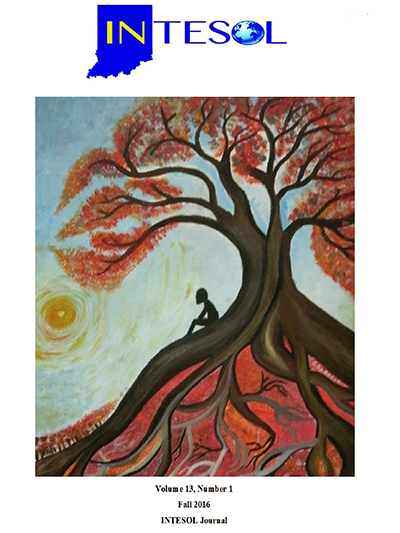Why Are My Chinese Students so Quiet?: A Classroom Ethnographic Study of Chinese Students’ Peer Review Activities in an American Multilingual Writing Class
Abstract
This paper explored how Chinese students perceived peer review activities and how they viewed the roles of their Chinese identities played in their interaction and negotiation in a freshmen composition class at a Midwest university in the US. In this study, classroom ethnographic research methodology was used to analyze the sociocultural factors involved in Chinese students’ peer review activities and to uncover the way the tacit culture shaped students’ learning experiences in classroom. The findings showed that there was a significant gap between American pedagogical objectives and the Chinese students’ real practice. Students basically regarded peer review as a problem-identification process instead of a social-cultural practice that involved dynamic negotiation. Although they denied that it was their Chinese cultural background that made them speak less in class, they were unaware of the fact that the way they viewed peer review as “finding out the problems” was exactly how they were influenced by their previous teacher-centered classroom experiences.
References
Allaei, S. K., & Connor, U. M. (1990). Exploring the dynamics of cross-cultural collaboration in writing classrooms. The Writing Instructor, 10(1): 19-28.
Bloome, D. (2012). Classroom ethnography. In M. Grenfell, D. Bloom, C. Hardy, K. Pahl, J. Rowsell, & B. Street (Eds). Language, Ethnography, and Education: Bridging New Literacy Studies and Bourdieu (pp. 7-26). New York, NY: Routledge.
Cotterall, S., & Cohen, R. (2003). Scaffolding for second language writers: Producing an academic essay. ELT Journal, 57(2): 158-166.
Carson, J., & Nelson, G. (1996). Chinese students’ perceptions of ESL peer response group interaction. Journal of Second Language Writing, 5(1): 1-19.
Flower, L. (1994). The Construction of Negotiated Meaning: A Social Cognitive Theory of Writing. Carbondale, IL: University of Southern Illinois Press.
Guerrero, M., & Villamil, O. S. (1994). Social-cognitive dimensions of interaction in L2 peer revision. The Modern Language Journal, 78(4): 484-496.
Hairston, M. (1982). The winds of change: Thomas Kuhn and the revolution in the teaching of writing. College Composition and Communication, 33(1): 76-88.
Hu, G. (2005). Using peer review with Chinese ESL student writers. Language Teaching Research, 9(3): 321-342.
Hu, G., & Lam, S. (2010). Issues of cultural appropriateness and pedagogical efficacy: exploring peer review in a second language writing class. Instructional Science, 38(4): 371-394.
Liu, J., & Sadler, R.W. (2003). The effect and affect of peer review in electronic versus traditional modes on L2 writing. Journal of English for Academic Purposes, 2(3): 193-227.
Miao, Y., Badger, R., & Zhen, Y. (2006). A comparative study of peer and teacher feedback in a Chinese EFL writing class. Journal of Second Language Writing, 15(3): 179-200.
Nelson, G. L., & Carson, J. G. (1998). ESL students’ perceptions of effectiveness in peer response groups. Journal of Second Language Writing, 7(2), 113-131.
Paulus, T. M. (1999). The effect of peer and teacher feedback on student writing. Journal of Second Language Writing, 8(3): 265-289.
Perl, S. (1980). Understanding composition. College Composition and Communication, 31(4): 363-369.
Philips, S. (1983). The Invisible Culture: Communication in Classroom and Community on the Warm Springs Indian Reservation. New York, NY: Longman.
Sommers, N. (1980). Revision strategies of student writers and experienced adult writers. College Composition and Communication, 31(4): 378-88.
Tsui, A. B. M., & Ng, M. (2000). Do secondary L2 writers benefit from peer comments? Journal of Second Language Writing, 9(2):147-170.
Tuzi, F. (2004). The impact of e-feedback on the revisions of L2 writers in an academic writing course. Computers and Composition, 21(2): 217-235.
Villamil, O. S., & de Guerrero, M. C. M. (1996). Peer revision in the L2 classroom: Social-cognitive activities, mediating strategies, and aspects of social behavior. Journal of Second Language Writing, 5(1): 51-57.
Villamil, O. S., & de Guerrero, M. C. M. (1998). Assessing the impact of peer revision on L2 writing. Applied Linguistics, 19(4): 491-514.
Zhang, S. (1995). Reexamining the affective advantage of peer feedback in the ESL writing class. Journal of Second Language Writing, 4(3): 209-222.


